Thirty feet beneath the sidewalks of Brooklyn lies a network of tunnels packed with nearly twenty-eight thousand pounds of aging cheese. It’s a scene that hearkens back to a European practice in which cheese was aged locally, a practice into which U.S. cheesemakers never quite bought.
More than 150 years ago, lager beer aged in this particular underground facility. Today it’s home to Crown Finish Caves, a seven-person operation to which ten dairies have entrusted their money-makers for aging. It’s a temporary holding cell for fifteen types of cheeses, each resting there to ripen before going on sale at shops, groceries and restaurants nationwide.
It’s a novel approach to a centuries-old tradition that, until only recently, did not exist in the United States. This move toward more collaborative efforts between American dairies and budding businesses devoted to aging cheese will likely mean more interesting, flavorful, and locally produced products available at grocers in the next decade. And this trend could save small American dairies.
Some experts attribute America’s lack of cave-aging cheese—called affinage—to the popularity of English-style varieties, like clothbound cheddar, which dominated U.S. markets from the 1630s through the 1800s.
Other cheese experts subscribe to the notion that the go-it-alone attitude that typifies American industry and culture permeated U.S. dairies too. At the heart of cheese-aging is a trust built between the cheesemaker and the affineur both dependent on the other to provide a quality product and environment. A bad cheese could infect others in the cheese cave.
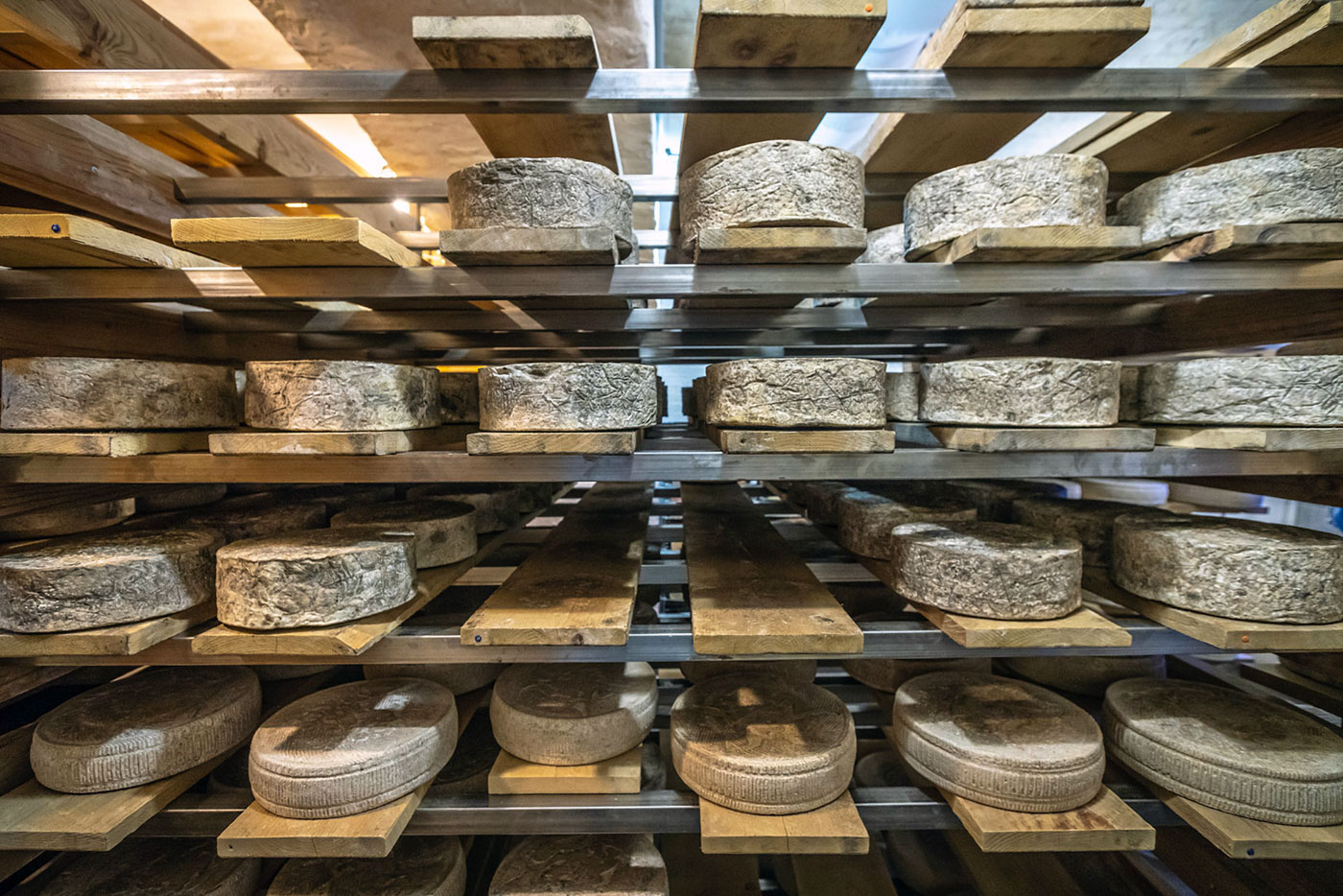
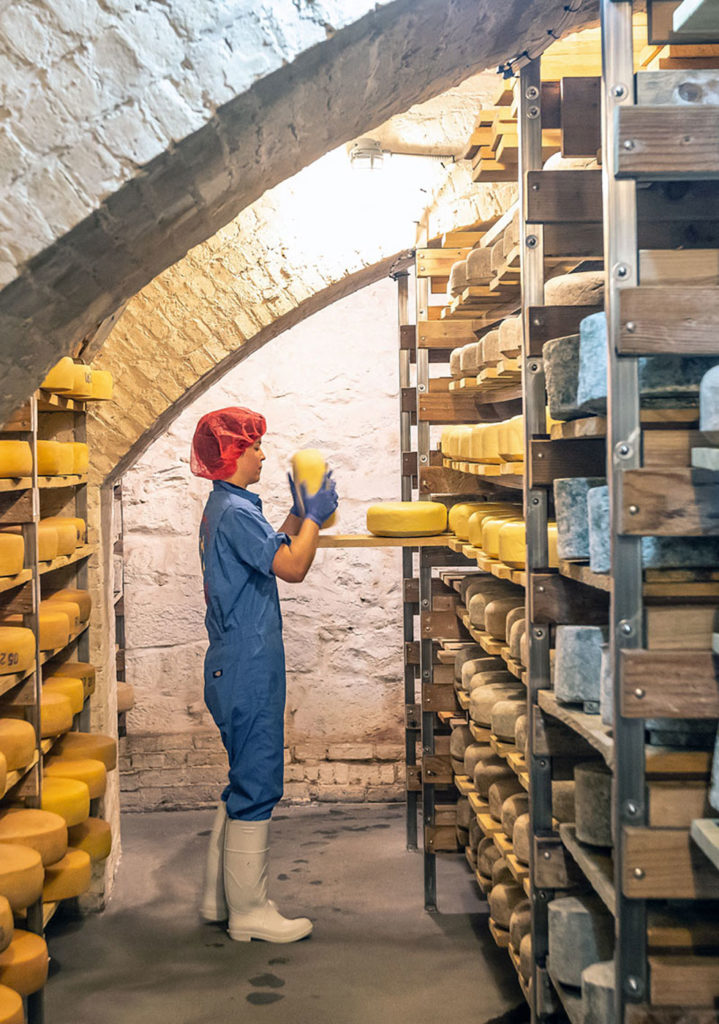
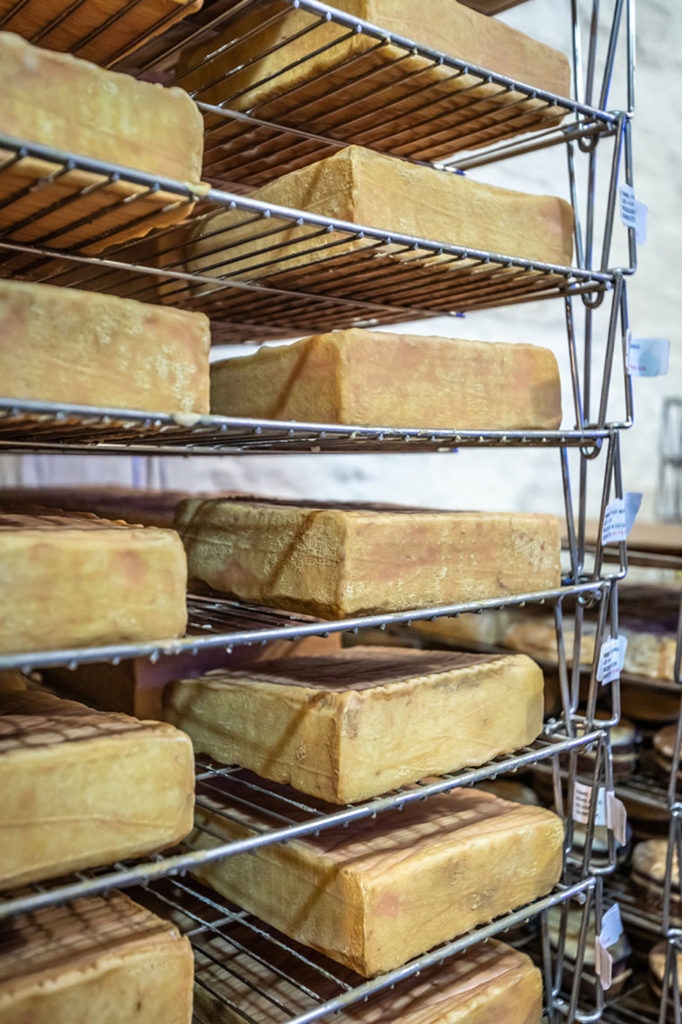
“The rugged individualism and ego—pride, if you want to put a positive spin on it—has been a barrier to collaborative efforts,” says cheese historian Paul S. Kindstedt, a professor at the University of Vermont who studies the chemistry, crystallography and structure of cheese. “To get a cheese at its prime is really hard,” Kindstedt says. “You’re seeing more and more cooperative organizations developing … where they take the cheeses and carry it the rest of the way.”
That individualistic attitude is something some industry leaders are working to reverse. “Artisan products tend to see an extension of the ego and identity of the producer. There’s a cult of celebrity around food,” says Mateo Kehler, co-owner of acclaimed Vermont cheese producer Jasper Hill Farm. “We’re really interested in challenging that in a way through collaboration to develop products that have an identity of their own that’s linked to an area and not a producer.”
Over the past decade, a symbiotic relationship between American cheesemakers and emerging affineurs has begun to unfold with some innovative results. U.S. affineurs have taken a note from Europe in developing caves with just the right humidity and airflow, while developing new approaches to aging their products.
At Crown Finish Caves, the affineurs rub wheels of cheese with beer and cider to impart flavor. A creamy goat and cow cheese sold only at the Blue Hill Stone Barns in Tarrytown, New York, for example, is rubbed with a thin layer of carbonized lamb and pig bones to confer a barnyard-esque flavor (this is a good thing), thanks to the addition of bone char.
“On a very basic level, what they’re doing isn’t new to the cheese industry, but they’re certainly trying to forge a new path in the United States,” says Alex Ourieff, manager of salumi and formaggi at Eataly’s Los Angeles location.
“There are a handful of people doing it in the United States,” Ourieff says. “[Crown Finish’s] approach, to me, is distinctly American and reminds me a lot of what’s going on in the craft beer industry. They’re very involved in development that reaches beyond traditional flavor methods.”
The tradition of affinage dates back to the Romans conquering much of Europe. In doing so these early conquerors spread two types of simple, traditional cheese: a moist, ready-to-eat cheese and a slightly more aged Pecorino-style cheese. A mixture of colonization by the Romans and environmental factors allowed for the development of more sophisticated, flavorful styles of cheese to emerge throughout Europe. The regions where Romans introduced their culinary staple had cooler micro-environments that were ideal for aging cheese and had abundant caves for storage. With the new microclimates came a shift in the microbiota—or the bacterial composition in the air—paving the way for yellow- and orange-colored varieties.
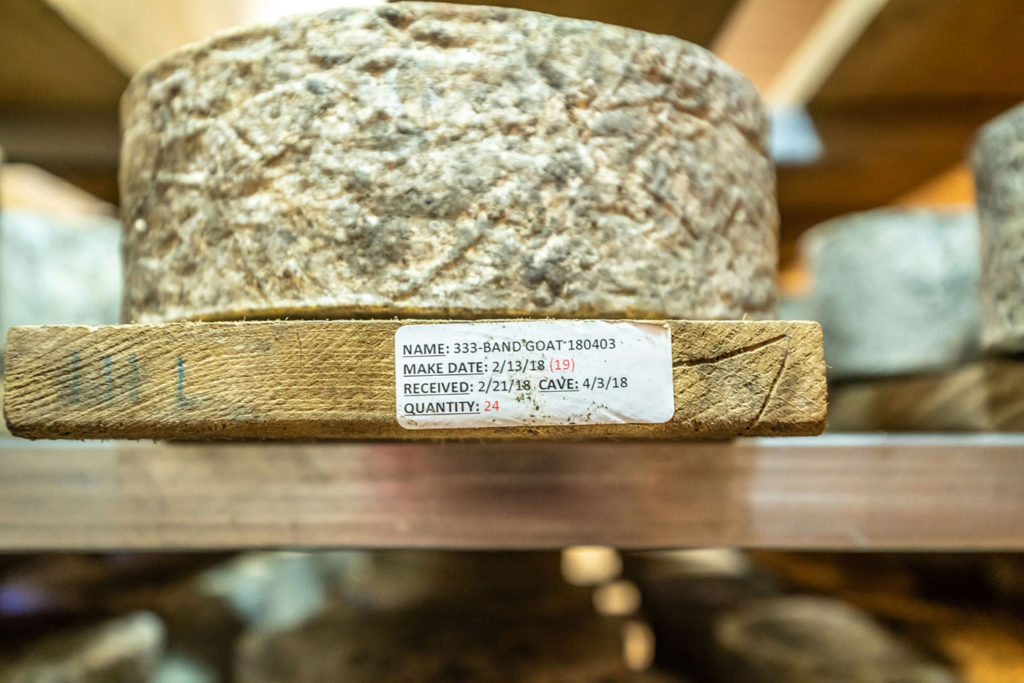
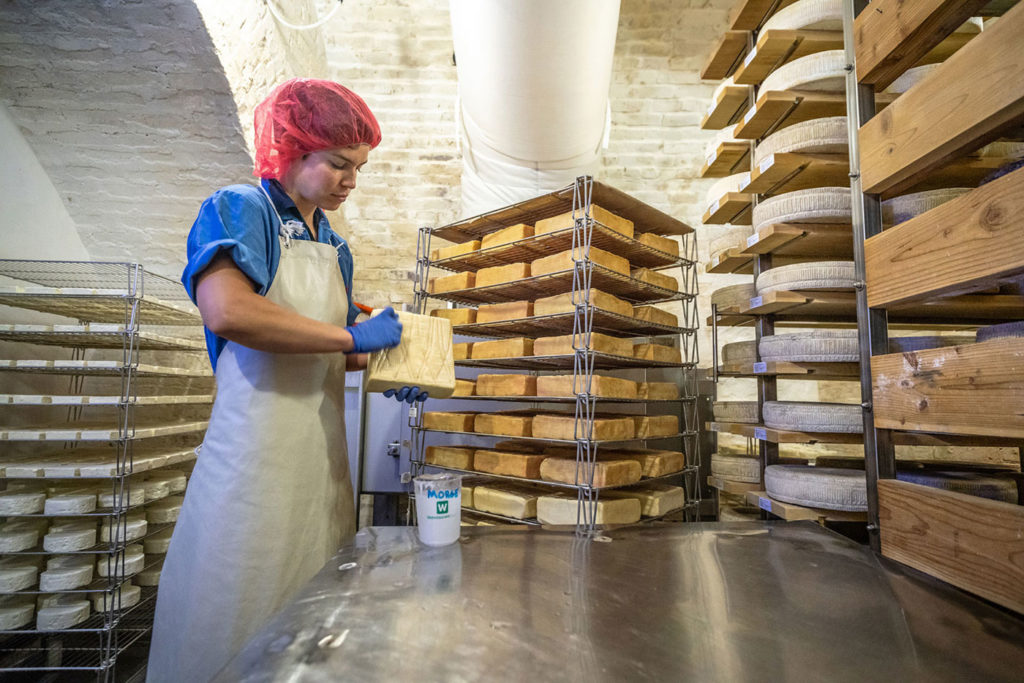
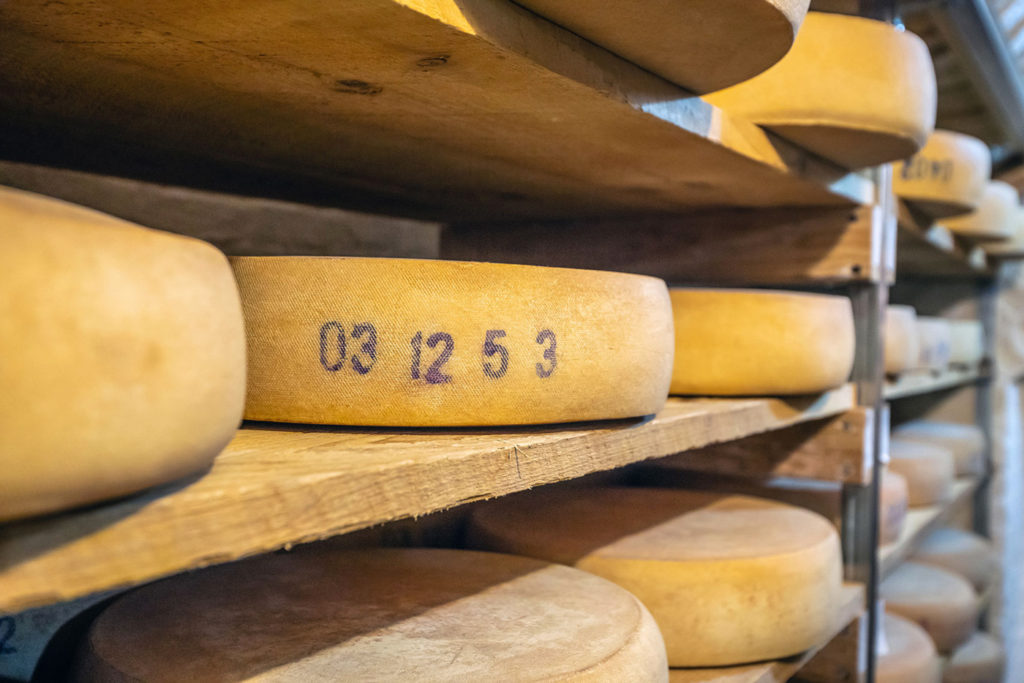
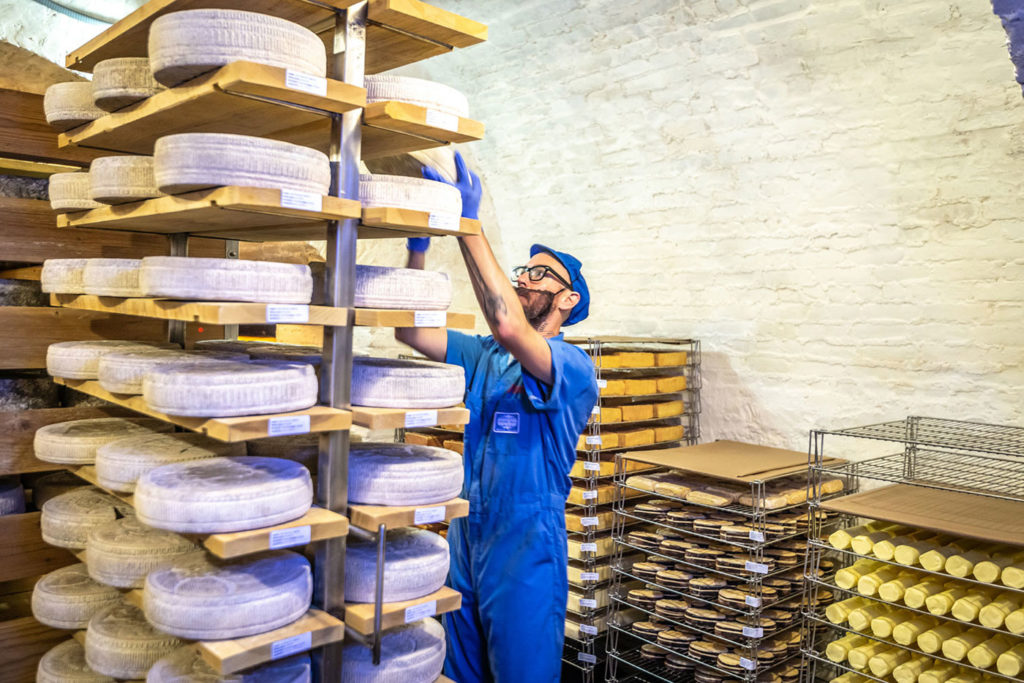
“It’s really an advantage of this microenvironment that inspired regions of Europe,” Kindstedt says. “That basic Roman technology and that basic moist cheese—with incredibly high relative humidity—inspired and enabled the smear-ripened cheese to be refined.”
With cave aging developed nuanced flavor and varieties of cheese like Roquefort, Muenster and Limburger from northwestern Europe. Cheeses that would otherwise not be possible in the warmer Mediterranean climates of Southern Italy began to proliferate regions of Western Europe starting around the turn of the millennia or about 100 A.D., Kindstedt says.
England, however, developed a hard-pressed style of cheese. By the time the American colonies were settled, the English had refined a style of fifteen-pound hardy cheese that had a rind and prevented rot—the antithesis of creamy cheeses.
“Their descendants for the next two hundred years dominated the type of cheese-making in America,” Kindstedt says. “What was originally a cheshire cheese … came to the forefront and Americans copied the technology in the early nineteenth century—you see cheddar cheese being referred to instead of cheshire cheese.”
It wasn’t until European immigrants began migrating to the U.S. in the late 1800s and early 1900s that smear-ripened styles of cheese began to get a small amount of traction stateside. That narrow foothold was fleeting until the latter half of the twentieth century. With it came a hunger for complex flavors—like the brachybacterium, which imparts a broccoli-like flavor, or geotrichum candidum, which can infuse a cheese with a toasty brioche or mushroom-like flavor, says Ethan Partyka, cave manager at Crown Finish Caves. Aging cheese can take a good cheese and completely change its texture and flavor profile.“Affinage does for cheeses what great coaching does for athletes,” Ari Weinzweig, co-founder of gourmet grocer Zingerman’s Delicatessen, famously wrote in the 2003 book Zingerman’s Guide to Good Eating.
Where caves once acted as storage locations with stable-but-imprecise temperature, microbial makeup, and humidity, the aging facilities of today are more akin to refined laboratories than natural geographic features. Seasonal fluctuations, airflow exchange, humidity, and temperature are carefully measured, each playing an integral role in fostering the growth of the right strains of bacteria, yeast and fungi. At Crown Finish Caves the temperature is a constant fifty-three degrees. Humidity hoovers at about ninety-four percent, but is difficult to control, Partyka says. The summer heat in New York means that to cool the cave introduces more airflow. And the fall months typically bring a yellow mold called chrysosporium sulphureum at Crown Finish.
In Greensboro Bend, Vermont, the caves at Jasper Hill Farm can sometimes warm up to three degrees in the heat of summer despite the fact that they’re deeply underground. These slight fluctuations affect the mold-to-bacteria ratio and amount of fungi-to-yeast on the cheeses. In the depths of Vermont’s winter, fungi typically proliferate and yeast growth is inhibited.
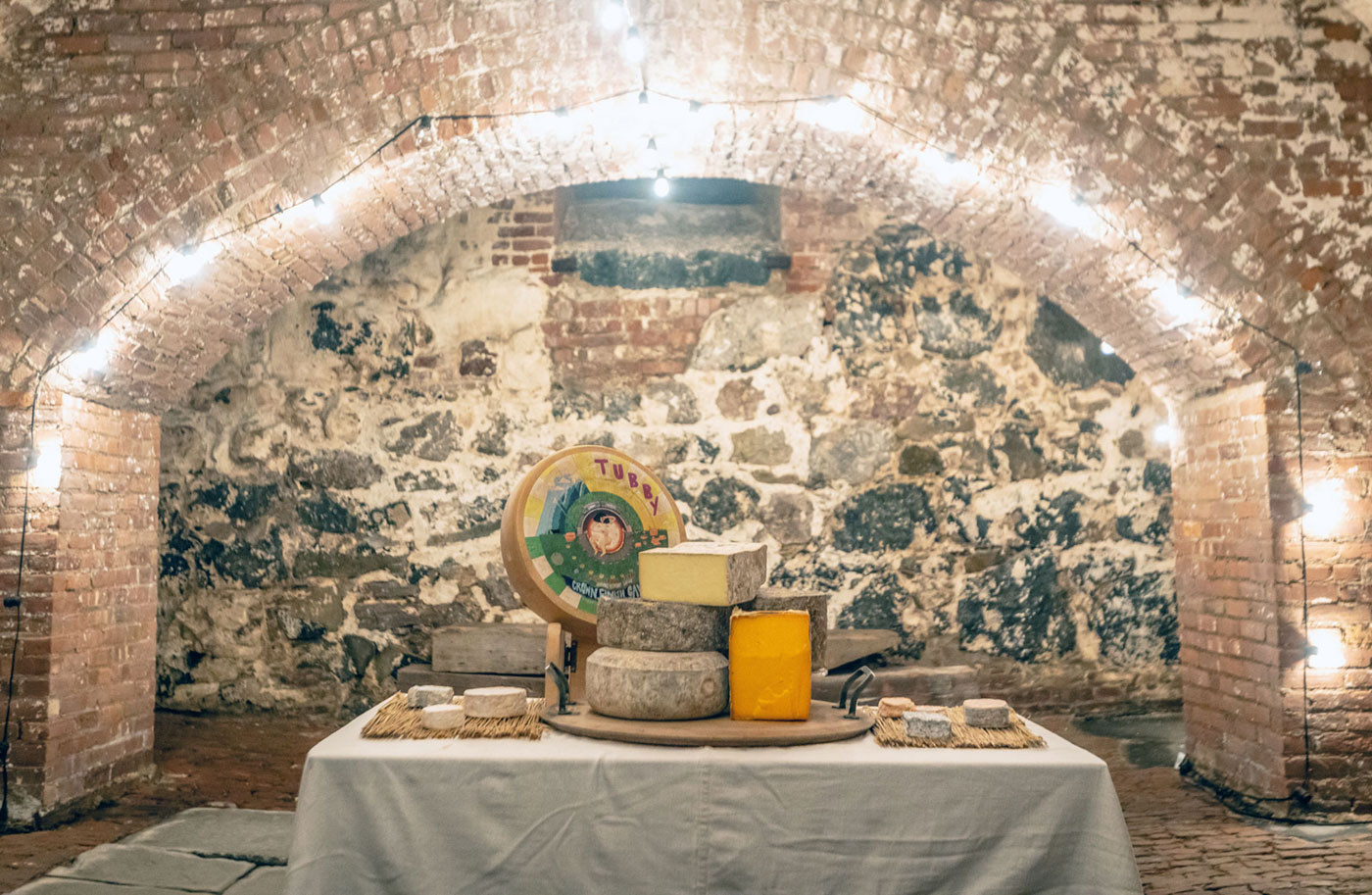
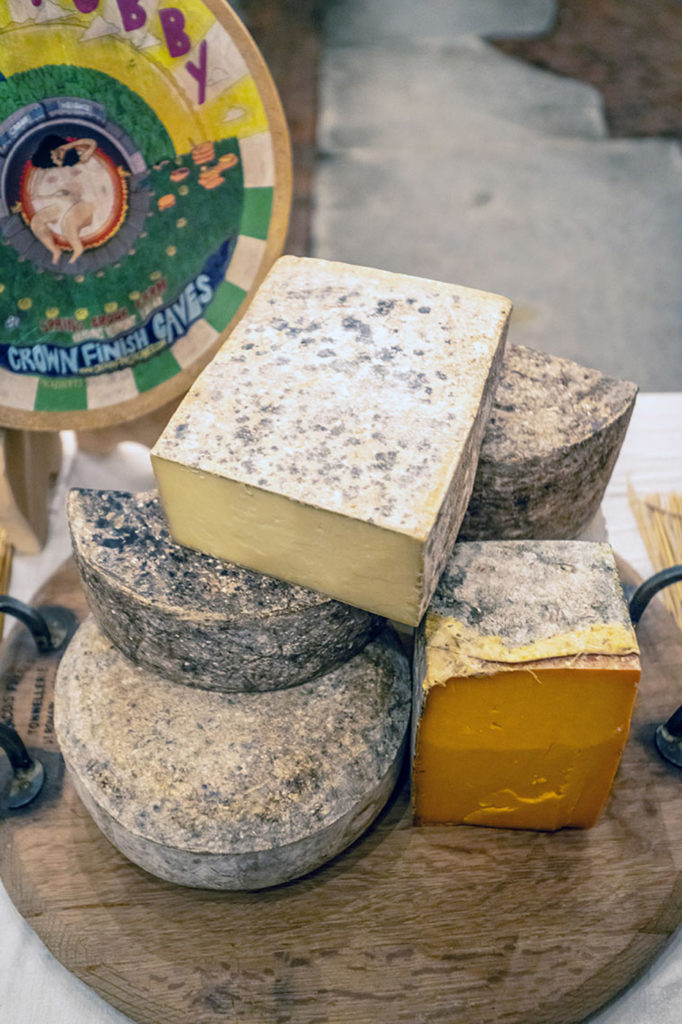
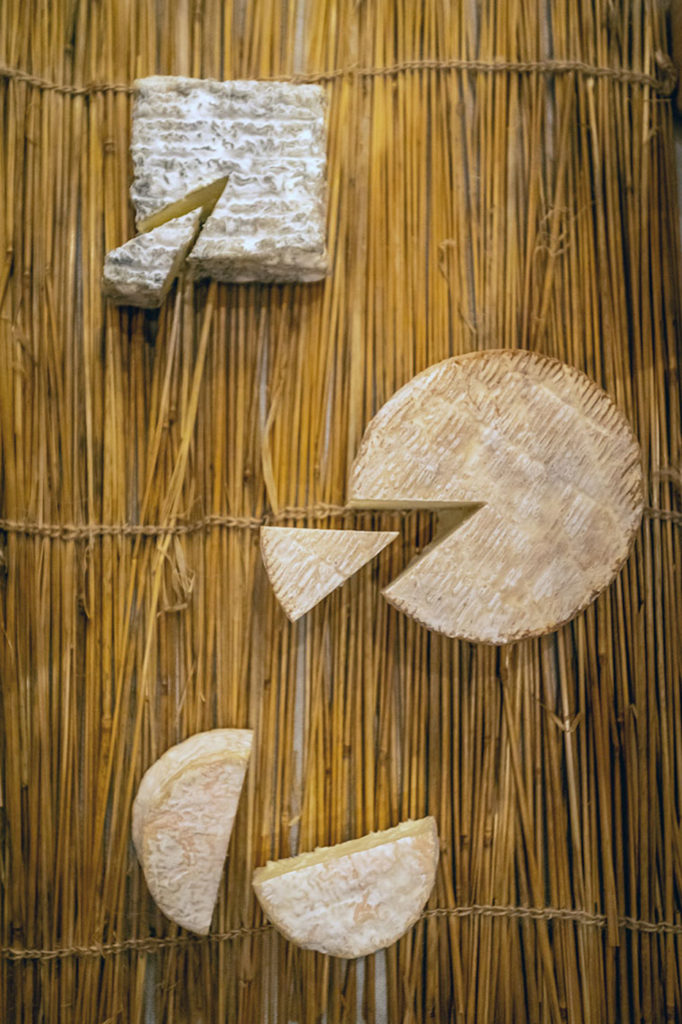
To create the perfect environment, each cheese ages in a specially designed environment at Jasper Hill Farm with seven vaulted tunnels reaching back into the underground rock. A Bayley Hazen Blue, for example, could never be housed near Harbison cheese because of cross contamination affecting the product’s flavors.
“What we’re doing is really complicated,” Kehler says. “They’re in environments that are selected for the microbial ecologies we want to see on these cheeses.”
Ultimately, affinage may do more than make an enhanced product, elevating cheese beyond the realm of a commodity. It could sustain the business of cheesemaking and small farms across the U.S.
“This is the direction of the future. It’s going to get harder and harder for small cheesemakers to remain independent to do it all,” says cheese historian Kindstedt. “To milk the cows, raise the crops, age the cheese, ship it, develop relationships with cheesemongers, use distributors—those quality and economic considerations are going to continue this trend of centralized affinage facilities.”
In addition to creating a better product, affinage makes more financial sense for small farmers. “It’s about the economics of it,” says Ourieff. “It’s about saying people should be able to continue raising livestock and produce high-quality products. Everything shouldn’t be a commodity; everything shouldn’t be mass produced. You shouldn’t have to have eight thousand head of cattle to make a living. You should be able to have a small farm and make a living.”

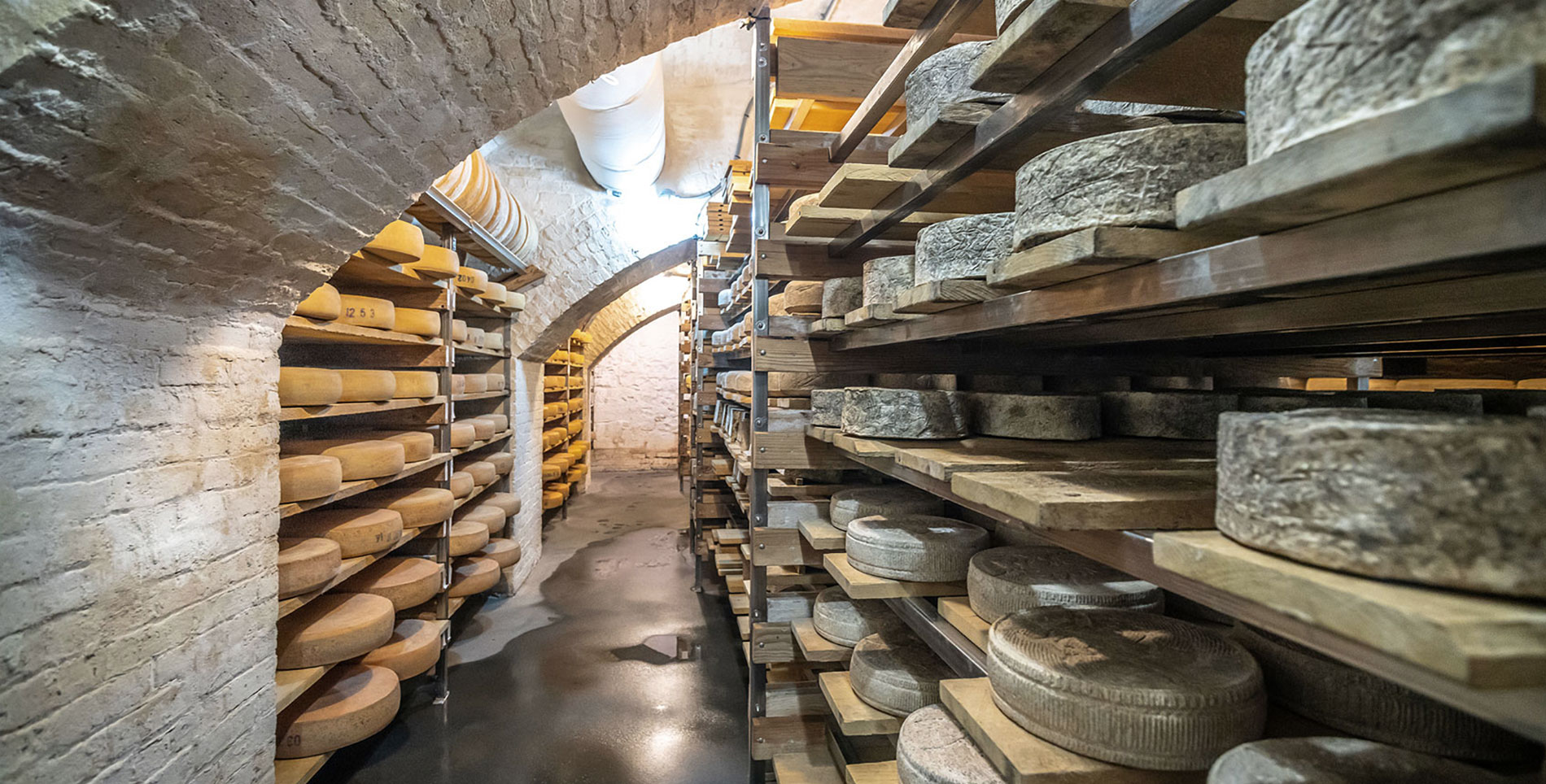

Our comments section is for members only.
Join today to gain exclusive access.